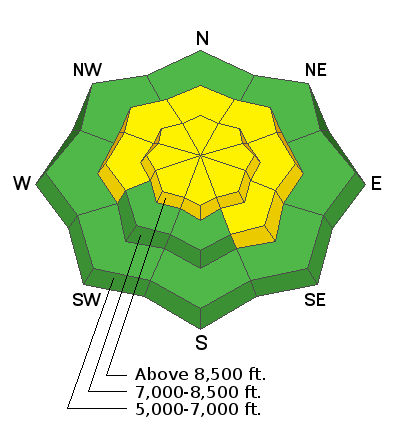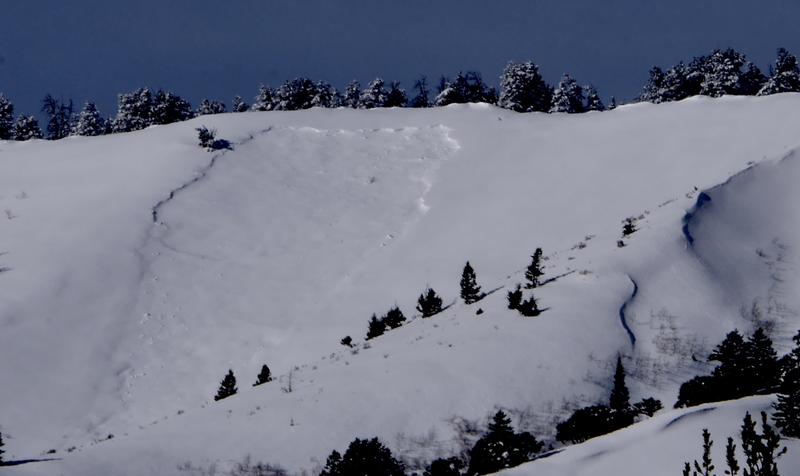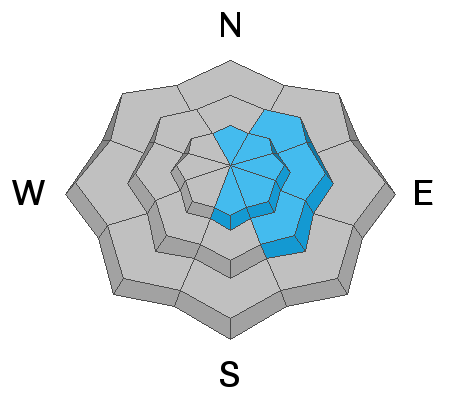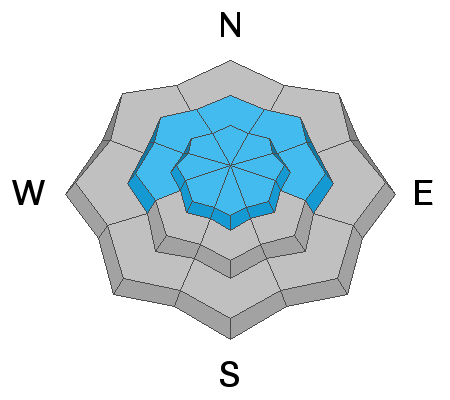It's been about a week since we've seen natural avalanche activity in the Logan Zone and no new avalanches were reported this week. Drifting from westerly winds created heightened conditions on some upper and mid elevation slopes, and you might trigger small avalanches consisting of wind drifted snow. Dangerous hard slab avalanches failing on a persistent weak layer are gradually becoming less likely for people to trigger. Stability has also improved on lower elevation slopes, where cold temperatures solidified rain-saturated snow. We found nice shallow powder and stable conditions on sunny slopes, in sheltered lower angled terrain, and at lower elevations.
The last rays of sun on Cherry Peak 1/22/19
The Tony Grove Snotel at 8400' reports 2 inches of new snow in the last 24 hours. It's 20º F this morning and there's 62" of total snow containing 93% of average SWE for the date. I'm reading 14º F, at the 9700' CSI Logan Peak weather station, and northwest winds are currently averaging around 20 mph, with gusts in the 40s.
A series of weak storm systems will move through Utah, bringing periods of minor mountain snow accumulations and temperatures near seasonal normals. Today we'll see snow showers, with an inch of accumulation possible. It'll be mostly cloudy, high temperatures at 8500' around 25º F, and 15 to 20 mph west winds. Tonight, snow showers are possible, low temperatures around 12º F, and 15 to 20 mph west-southwest wind. Tomorrow will be partly cloudy, with temperature around 29º F, and 15 mph west wind.
-A backcountry skier was buried by an avalanche and killed near Fairview late Thursday, 1/18/19. Search and rescue teams from Emery and Sanpete County recovered his body Friday near Electric Lake on the Manti Skyline. Preliminary report is
HERE.
-Natural avalanches were widespread across the Logan Zone late last week, but they're covered up by fresh snow now so not so obvious. Natural avalanches of note include somewhat blown-in evidence of large hard slab avalanches on many paths in the Wellsville Range, and in the Bear River Range, including big ones in Wood Camp, Tab Hollow, Logan Dry Canyon, and Castle Rock near Naomi Peak.
I could see evidence of a large hard slab avalanche in off the Beirdneau Ridge in Tab Hollow.
A natural avalanche off Grandfather Cornice, Cornice Ridge as seen on 1/22/19












